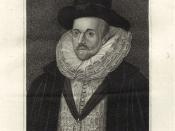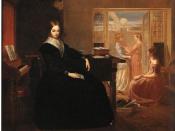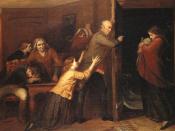The Victorian era was one of great change in not only the arts, but also society at large. Brittan saw itself as the greatest, most advanced nation of all, leading the world in industrialisation. Despite this, a high percentage of the British population was very poor and this was an ongoing social issue. These people were never seen as worthy subjects of the arts, however in the 1840s painter Richard Redgrave began to draw on their lives as a form of social criticism and to call "attention to the struggles of the poor and oppressed . He painted a series of such paintings with particular reference to another social issue, the 'woman question' . A leading example of such Redgrave works, and more broadly Victorian art, is 'The Sempstress' of 1844 (first version) which this essay will examine and analyze in terms of its symbolism, style and significance.
'The Sempstress' was first shown at the Royal Academy in 1844 and depicts a young girl sewing late into the night in her vile garret looking upwards to the heavens like a saint .
It is a reflection of the social reality of the British working woman during the 1840's and 50's . During this period, many women from the lower middle, middle and even the upper classes were forced into the workforce due to an unequal sex ratio of three women to every two men . In addition, pressure was put on married women to work, as the wages for men in unskilled and semi skilled labour were often too low to support the family alone . These women mainly moved into occupations that were seen to be naturally feminine such as domestic service or needlework. Needlework was preferable to domestic service as one retained her independence and it was easily...



Very interesting
hey
very interesting keep it up jamjess
3 out of 3 people found this comment useful.